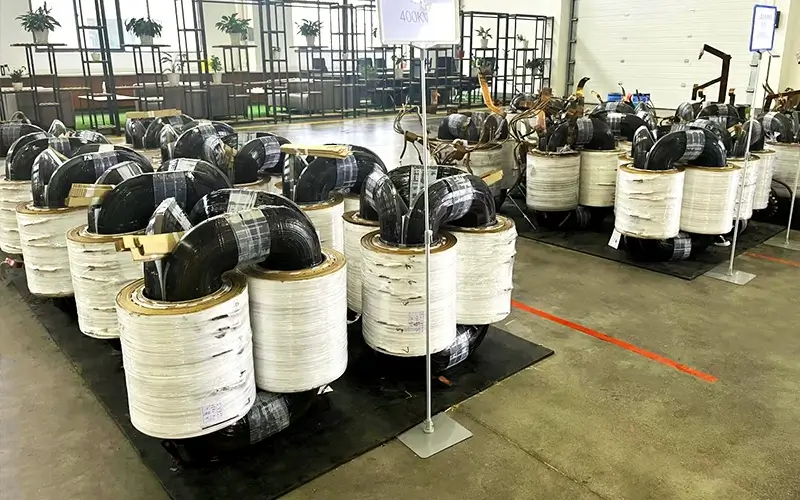Purpose of transformer core
The actual transformer always works under AC state. The power loss is not only in the resistance of the coil, but also in the iron core under the magnetization of the alternating current. The power loss in the iron core is usually called "iron loss". The iron loss is caused by two reasons, one is "hysteresis loss" and the other is "eddy current loss". Hysteresis loss is the iron loss caused by the hysteresis phenomenon in the magnetization process of the iron core. The size of this loss is proportional to the area surrounded by the hysteresis loop of the material. The hysteresis loop of silicon steel is narrow, and the hysteresis loss of the iron core of the transformer is small, which can greatly reduce its heating. Since silicon steel has the above advantages, why not use a whole piece of silicon steel as the iron core, but also process it into sheets? This is because the sheet iron core can reduce another kind of iron loss-"eddy current loss". When the transformer is working, there is an alternating current in the coil, and the magnetic flux it generates is of course alternating. This changing magnetic flux generates an induced current in the iron core. The induced current generated in the iron core circulates in a plane perpendicular to the direction of the magnetic flux, so it is called eddy current. Eddy current loss also causes the core to heat up. In order to reduce eddy current loss, the core of the transformer is stacked with insulated silicon steel sheets, so that the eddy current passes through a smaller cross-section in a narrow and long loop to increase the resistance on the eddy current path; at the same time, the silicon in the silicon steel increases the resistivity of the material, which also plays a role in reducing eddy current. For the core of the transformer, a 0.35mm thick cold-rolled silicon steel sheet is generally selected. According to the required core size, it is cut into long sheets and then overlapped into a "日" shape or a "口" shape. In theory, if the eddy current is to be reduced, the thinner the silicon steel sheet and the narrower the spliced strips, the better the effect. This not only reduces eddy current loss and temperature rise, but also saves silicon steel sheet materials. But in fact, when making silicon steel sheet cores. It is not just based on the above-mentioned favorable factors, because making the core in that way will greatly increase the working hours and reduce the effective cross-section of the core. Therefore, when making the transformer core with silicon steel sheets, it is necessary to weigh the pros and cons based on the specific situation and choose the best size. The transformer is made based on the principle of electromagnetic induction. There are two windings on the closed iron core column, a primary winding and a secondary winding. When the AC power supply voltage is added to the primary winding, an alternating current flows through the primary winding, and a magnetic potential is established. Under the action of the magnetic potential, an alternating main magnetic flux is generated in the iron core. The main magnetic flux passes through the iron core at the same time, {crosslinking] the primary and secondary windings, and is closed. Due to the electromagnetic induction effect, induced electromotive force is generated in the primary and secondary windings respectively. As for why it can step up and down the voltage? That needs to be explained by Lenz's law. The magnetic flux generated by the induced current always hinders the change of the primary magnetic flux. When the primary magnetic flux increases, the magnetic flux generated by the induced current is opposite to the primary magnetic flux. That is to say, the induced magnetic flux generated by the secondary winding is opposite to the main magnetic flux generated by the primary winding, so a low-level alternating voltage appears in the secondary winding. Therefore, the iron core is the magnetic circuit part of the transformer, and the winding is the circuit part of the transformer.





